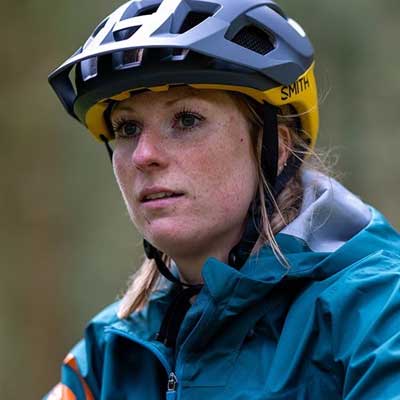
Tiso GuidesHow To Winterise Your Walking Adventures
What are the essential items to add to your rucksack for safer winter walking - and how can you make the outing more comfortable and rewarding? We offer tips and advice on winterising your walking kit.
Winter brings shorter days, lower temperatures, greater chances of windchill, plus snow and ice. If you plan to walk in Scotland's mountains at this time of year the chances are they will be generally inhospitable.
Yet the opportunities for great winter walking and fabulous views are plenty.
First Things First
Before you pack your rucksack or even make a plan about where to walk, you need to check the weather and avalanche forecasts.
Useful websites include MWIS, Met Office mountain weather and the Scottish Avalanche Information Service. Being able to read the forecasts is also vital for safety.
If you are unsure about winter navigation, skills and avalanche awareness there are plenty of courses to sign up to. It’s important you know what you are doing in the winter hills and mountains.
Always tell someone where you will be walking and give them an expected time for returning. If something does happen they will be able to say where you planned to go.
Winter brings shorter days, lower temperatures, greater chances of windchill, plus snow and ice. If you plan to walk in Scotland's mountains at this time of year the chances are they will be generally inhospitable.
Winterise Your Walking Kit
Let's start with what you should wear for winter walking. Think layers.
Baselayers
A baselayer is worn in layers, starting with one against your skin. They are made from a lightweight material that keeps you warm but also allows sweat to wick away to the outside.
Wear several layers to trap heat in between each layer for good warmth.
You can then add or peel off layers, including short and long-sleeved tops and leggings depending on the conditions or how hard you are working.
Baselayers that are made from natural materials, such as merino or yak wool, and naturally warming and less likely to smell after a few days of walking!
Winter Walking Boots
Look for boots that are of good quality, fully waterproof and have stiff and grippy soles. Not only will it be wetter in winter but there will be a high chance of snow and ice. If it looks like it might turn icy, why not invest in some extra grip? You can pick up detachable grips from Yaktracks to give you some extra help.
Your boots should also be crampon compatible. There are various different boots that suit different types of crampons.
As a general guide, boots are rated from B0 to B3, from flexible to stiffer. There are crampons to suit.
- B0 boots are too flexible for crampons.
- B1 boots can be used with C1 crampons.
- B2 boots can be used with C1 or C2 crampons.
- B3 boots can be used with C1, C2 or C3 crampons.
If in doubt, ask in store at one of our Tiso stores or check out the walking boots buying guide
Winter Waterproof Jacket
The ideal waterproof jacket for winter will be made of fabric that is wind and waterproof. Look for winter quality rather than lightweight summer quality of fabric.
If you are wearing last year's winter jacket you could give it some attention with a wash-in re-proofing detergent.
Features to look out for when buying a winter waterproof include DWR, high-grade Gore-Tex, eVent or similar, taped seams, a waterproof/water repellent zip, waterproof zipped pockets, an adjustable hood with a stiff peak (so it stays up in windy conditions), adjustable arm cuffs and hem and a brighter colour to aid safety on the hills.
Waterproof Trousers
A pair of waterproof and breathable overtrousers are essential. Buy trousers with zips on the outside of the legs to allow you to pull them on over boots.
Accessories
Hats or a buff that cover your ears; gloves or mittens that are designed to cope with cold conditions (add a pair of silk liner gloves for extra warmth); and winter walking socks are a must.
Larger Rucksack
In the winter months, you'll carry more spare clothing and safety kit, which means you need a larger rucksack, at least 35l. It's even more important that the rucksack is comfortable because it will be heavier.
Make sure it has padded shoulder straps, a padded hip/waist strap and some way of staying waterproof. If it does not have a waterproof cover, put all your kit inside in drybags. There's no point in having spare clothes if they end up soaked by rain.
Pack With Planning!
For winter walking you should add to your rucksack:
- Spare layers, such as a baselayer and mid-layer
- Spare socks
- Spare gloves
- Spare beanie hat/buff
- Emergency insulated jacket, such as a down or primaloft jacket
- Emergency blanket or shelter
- Compass and map (and make sure you know how to use them)
- Mobile phone (loaded with OS maps if you have the right app) and/or GPS gadget (and spare batteries)
- Crampons and ice axe (you also need to know how to use these)
- Head torch
- Small first aid kit
- Flask of hot drink
- Bottle or hydration bladder of water (you still sweat in winter and need to stay hydrated)
- More food than you think you'll need
- Emergency energy snacks
- In snowy conditions, a balaclava and ski goggles.
You will find all the kit you need in Tiso and you can ask the expert in store sales staff for advice.

Start your winter adventure with Tiso
Shop Now


